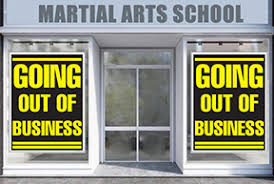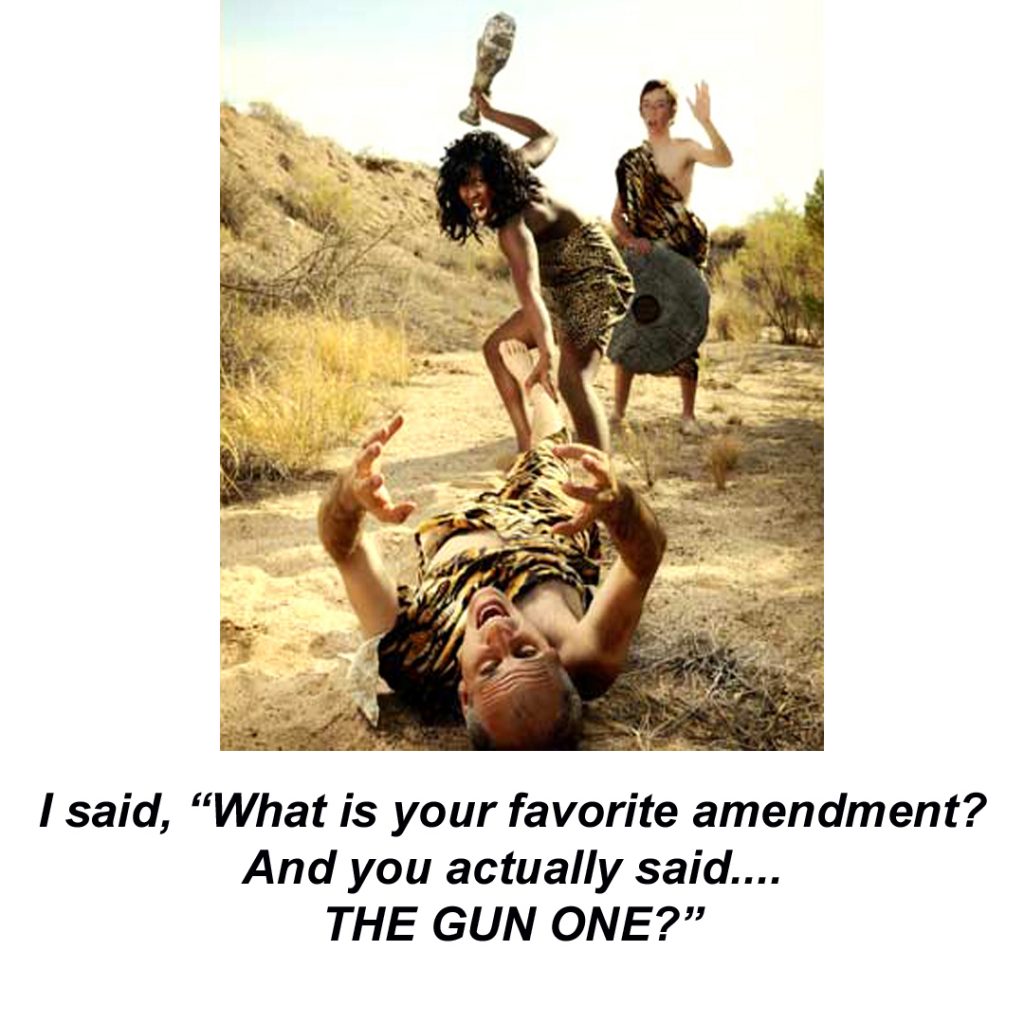
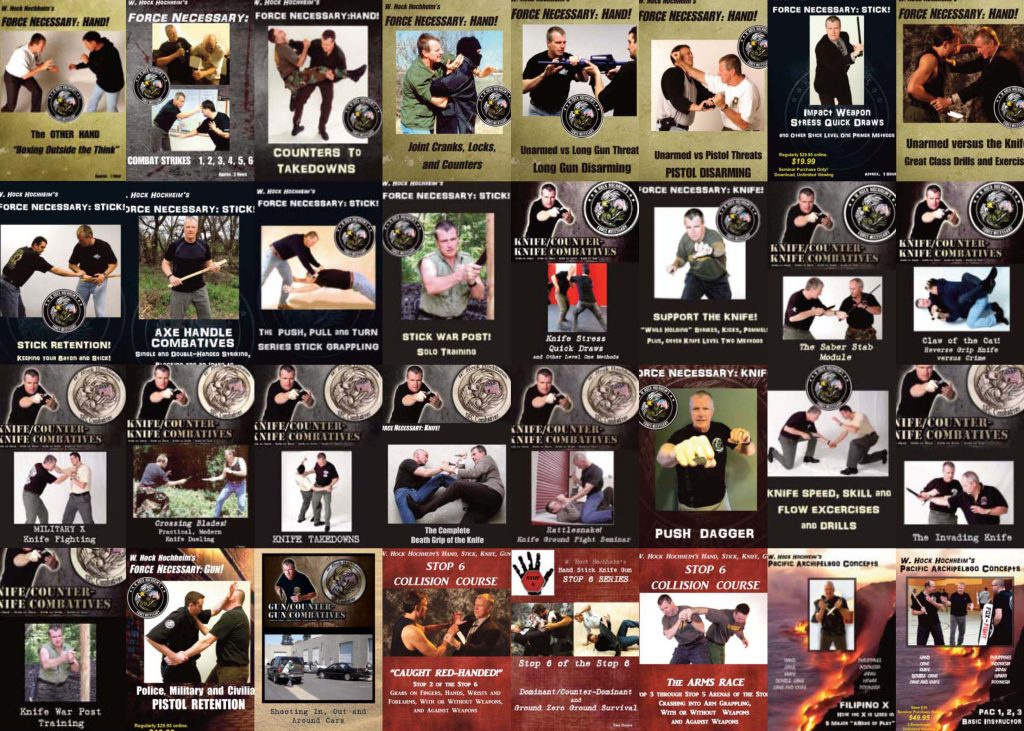


Your “table setting” and “know your table” have big meanings, in the self defense shooting world. Ever shoot from a chair, behind a table at the live fire range? Not often I’ll bet. When done, the seated, range training set up, the “table is set” this way – it takes-makes the assumption that you are the “Lone Ranger,” seated alone, shooting an unidentifiable, abstract somebody (the paper target imagined threat) always shooting straight forward from your seat.
I still some see gun courses on film and in photos with people sitting at tables and drawing and shooting while seated, (even reloading there in the chair! And at times doing really awkward 360 checks while seated.) Or shooters fully stand up exposing most of their bodies. Does the table ever get flipped over in this ‘Lone Ranger’ model? Think about all the calibers out there and the fickle deflection angles and how some flipped tables might help.
But this essay is not just about flipping tables. Sometimes you can’t, but rather about all the probable table situations and responses. “Know your table and the table-setting” shooting training via the “Who, what, where, when, how and why” question checklist.
Set the real table with questions and answers. Hopefully in these live fire range classes, these samples of the “Ws and H” Questions checklist was-is mentioned in the opening lecture to introduce and remind the bigger problems of the table-setting shooting?
I do wonder, do the table-chair courses ever finish the live fire range segment with any of the best training experiences? Doing the simulated ammo situations with actors (just other attendees) in common makeshift table settings. (Sim-ammo is all I do.) Real, vital “shoot-don’t-shoot” decision making, interactive experiences.
Yes, you must shoot some live fire from the chair and table a bit. Yes. And then hopefully, in this ‘Lone Ranger’ range set-up, practitioners might practice a segment of oh…flipping tables over and shooting too, and also worrying about where Tonto is, and work on all the other probable things in simulated ammo situations, rather than completely ignore all the training of many other chair-table probabilities.
How do you set the table for table-related gunfights?
_____________________________
Watch full, free training films at Hock’s Combatives TV Channel, click here
A DEEP HIP STYLE ROLLOVER THROW (Or a standing “Fat Man’s Roll?)
This application of an “arm” takedown I have done once in police work in a domestic disturbance. While sorting things out in a house, a man charged me from the rear, having escaped the verbal control of another officer nearby. I heard the officer yell “Stop!” Before he could wrap my torso with two arms (to do what, did he know?) I was able to react.
This reactive move is found a few places but was based for me from high school wrestling from back in the 1960s! (Back then was only some 10 years earlier.) In such wrestling, there are “neutral starting’”positions and “referee positions.” One of the common “referee position’ starting points inside a match was one person was down on their knees, the other atop and somewhat beside him with one arm wrapped around the bottom guy’s torso (rules can differ). No clasping “bear hug” allowed yet at this point. This is not a collegate wrestling course so we will leave it at that.
One of the series of moves we practiced back then was the bottom guy grabbed that wrapped arm and rolled him over. When just freestyle practicing, this also happened when the bottom guy partial stood up at times. I frequently did and saw this work. This complete standing version starts looking a bit like like a classic hip throw, at least in part. Anyway from high school I still had this move, this concept embedded in me.
I remember that the guy rushed me to the point that I might fall over forward anyway. I tried to turn and then this old move from inside me busted out. Stepped back, dropped and rolled. His feet smashed into furniture. We arrested this man and the jailer told me the next day that the man begged for aspirin from a bad headache all night long. I think he hit his head on the floor, possible like in these photos.
I am a proponent of the “double the force” concept – a late phase counter when being taken down. Can you grab the attacker, hang on, join with and add to the force of falling maybe with a turn? Putting him at a disadvantage 1) upon, during impact, or 2) after impact? Sometimes. Yes.
If you are going to practice it, try it a few times about knee high like some Judo (this known as Soto-makikomi) and wrestling does. Watch out for your partner’s head! Don’t forget to hit him at every opportunity, which Judo, BJJ and wrestling does not.
(I only did this one “for real,” one time in my whole life, but I ain’t dead yet.)
_____________

 There are so many examples of this routinely happening. We are probably all familair with misguided use of martial material applications. Look at the May, 2023 case, poor, well-meaning, former Marine case on the New York Subway, choking a crazy guy accidentally to death. Recently again in May, 2023, a woman was attacked by an immigrant in Denmark, an attempted rape. As he tore off her clothes, she sprayed him with pepper spray. Now she is under arrest for illegally carrying pepper spray! The rape suspect escaped. Too many examples to list.
There are so many examples of this routinely happening. We are probably all familair with misguided use of martial material applications. Look at the May, 2023 case, poor, well-meaning, former Marine case on the New York Subway, choking a crazy guy accidentally to death. Recently again in May, 2023, a woman was attacked by an immigrant in Denmark, an attempted rape. As he tore off her clothes, she sprayed him with pepper spray. Now she is under arrest for illegally carrying pepper spray! The rape suspect escaped. Too many examples to list.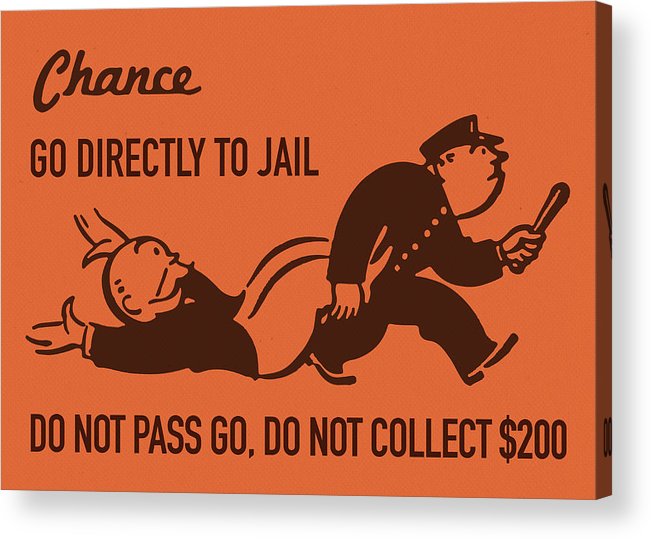 When challenged in court, your system-art will be examined. This does come back to the “What” questions. An instructor-practitioner of any art or system has this responsibility and should answer these “What” questions.
When challenged in court, your system-art will be examined. This does come back to the “What” questions. An instructor-practitioner of any art or system has this responsibility and should answer these “What” questions.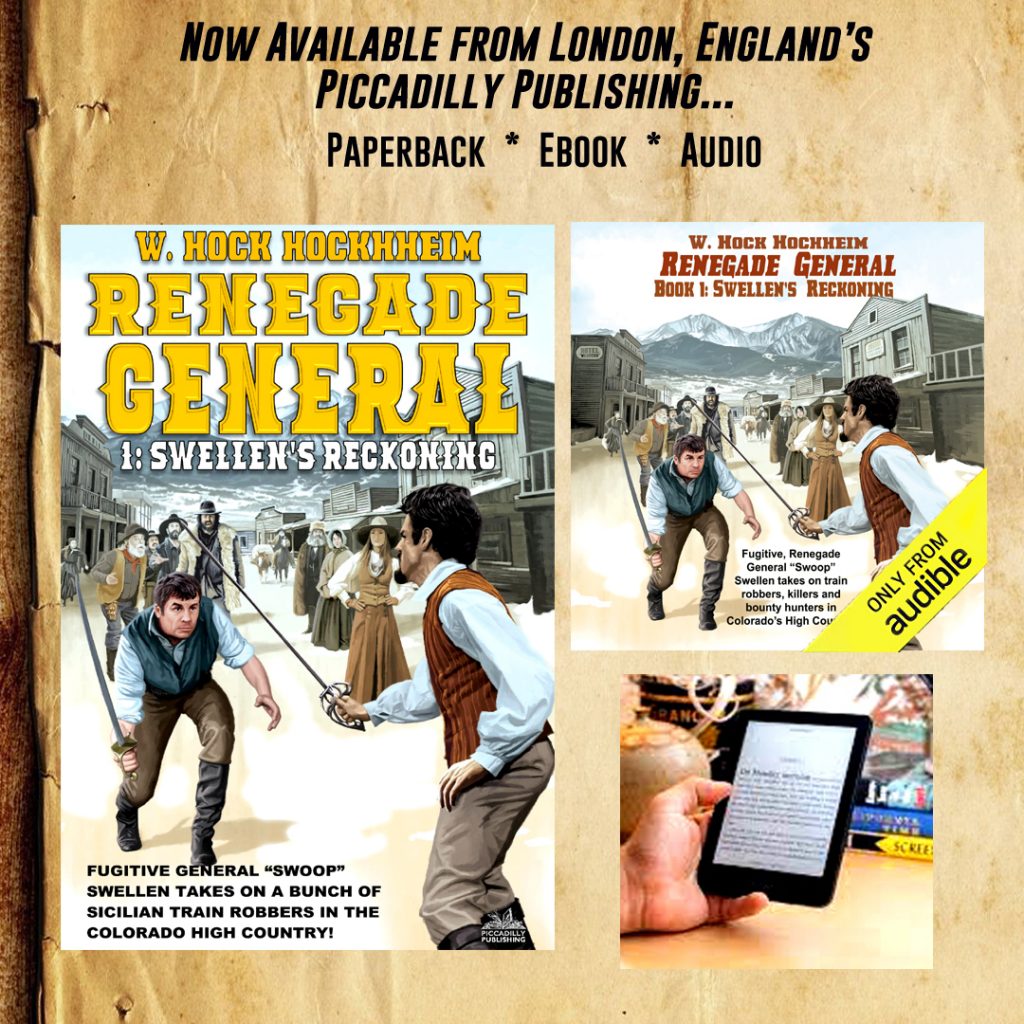
An Orderly or Tactical Retreat, (safely walking or running away!) Stay or retreat? A retreat has several definitions, like “retrograde” movements or a more modern “tactical retreat.” Usually, these definitions suggest that one retreats from a superior force in battle. Military. In today’s civilian world, remaining to fight and take action, may become a physical, legal (criminal law and civil law) nightmare and monetary problem. Winning and the law are often at odds.
Whatever the terms, retro, orderly or tactical, it still means you leave, escape, withdraw, whatever, with the best plan to do so. For a smaller, personal situation an orderly retreat is leaving a confrontation, safely and without being chased, at all, or much.
“Just run away!” these pseudo experts will say. But, just how far can you run? How fast? How long?
The law will ask, if there’s trouble, why did you go there and why are you still there? Can you leave people behind? Will you be leaving family, friends and comrades behind? Can you leave? Should you leave? Sometimes you can’t leave. Your choice is highly situational. Think of any violent situation from a fistfight to a crime, to an active shooter, on to war and ask these questions about staying or leaving?
How exactly will you retreat? If you stay, there will be violence. If you go? Best go in an orderly fashion. When you add the term “orderly,” it speaks of significant specifics. What is this “orderly” version? An orderly retreat?

In his beginning battles he had some large causalities usually from chaotic retreats. When his troops hit their perceived “breaking point,” hey turned and they scattered, most were killed from behind, running in disorderly retreats. Long known, psychological factors reveal that it is easier to “kill from a distance” and to “kill from behind,” without seeing a person’s face, without seeing a “personality.” (This relates to crime also.) Then, Alexander adopted he Macedonian 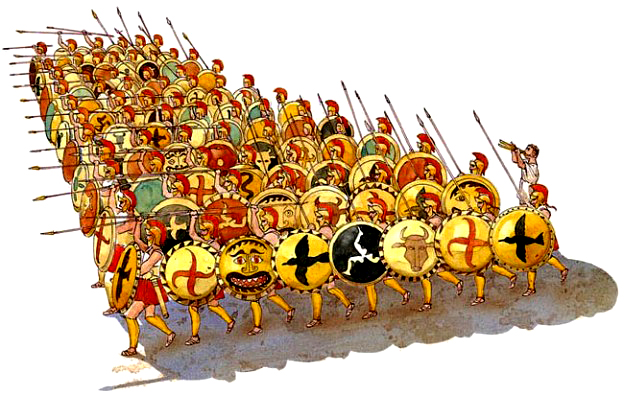
Simply turning and running away, sounds like good advice, but how far and fast can you run, and such may make you easier to be killed, and may ignite an anger, and/or ignite a hunter-chase mentality in a criminal or a enemy soldier. Departing, withdrawing as smartly as possible is better choice.
Turning and leaving. In the martial word, just turning from a too close opponent standing or down on the floor-ground, is “giving up your back” and means something specific to martialists – exposing your back is an invitation to be choked. In crime and war your turned back make you easier to be beaten, captured or be killed. When you turn to leave, it should be done by first backing away in some manner to a safe distance and then turning to leaving.
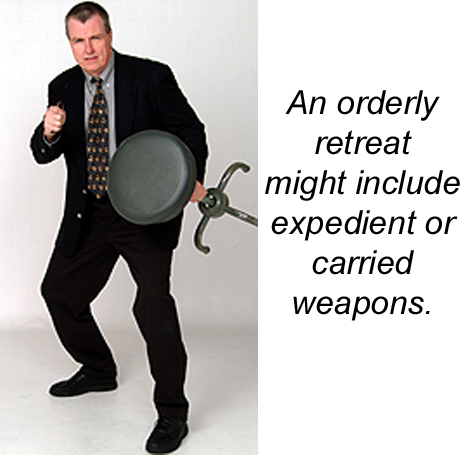
If no physical contact is made yet, we are still in the Stop 1 parameters and leaving the projected fight scene before it starts, is a quintessential Stop 1 situation-problem. But the option to leave may occur in any of the Stops, Stop 2 through Stop 6.

“Hock, sometimes you gotta’ blow the horn,” (the horn being thetrumpet of retreat.) “Always have a go-to hell plan, and another one when that one goes to hell too.”
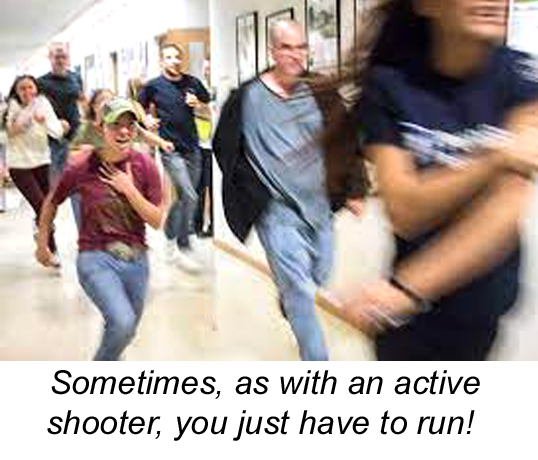
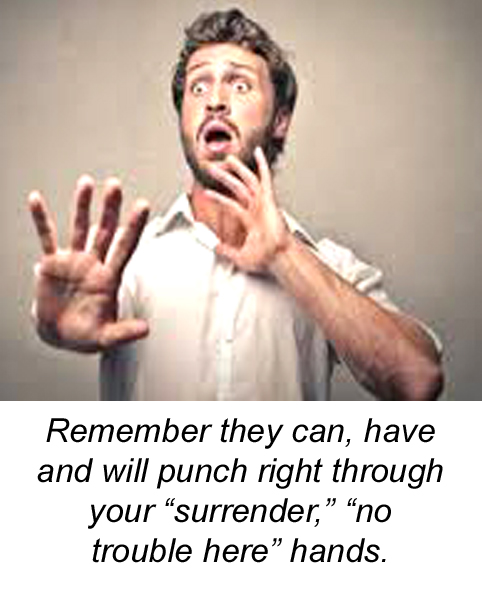
There is no one way to prescribe any one universal orderly retreat, but it is important to understand the concept, teach the idea, and develop and practice some real, “go to hell,” plans.
___________
Watch some free, full training films on Hock’s TV Channel! Click here…
My first Guro Dan Inosanto seminar was in 1986 and he told a story about his high school football team. (I forget the pro players he mentioned). He said that he was a running back and kept crashing into the defense. The coach asked him why did he run the ball that way? Inosanto replied,
Dan did pick and with that advice and he broke many state-wide, California high school running back records. He also added once that his coach made them run up and down steep hills in practice and to run down the hill as fast as possible. Since it was a hill, you ran faster down than on flat ground. Inosanto said it was “a bit like flying.” The coach told them to “remember that feeling of that speed. Mimic it.” (You usually learn a lot of related things at an Inosanto seminar.)
There are dreams of advancing, then there are tools to become advanced. Who knows those tools? I’d never thought much about these things before then. I also, needless to say, wanted to mimic Dan in terms of his knowledge, teaching and overall “cool.”
Improving. I mean, we all knew back then to weight lift to “get stronger,” and to run for endurance. What else? Well, repetition was important. But then who or what were we repeating? Mimicking? What of dedicated inspirations, guidance? Sure there was the Bible and Zig Zigler back then, but I’d never thought about codifying these diverse training ideas, inspirations and tools before 1986. They came very scattered. I was not alone.
I grew up in the New York City area where one could play baseball and football endlessly through countless organized leagues of all ages. I was playing baseball until I was 18 years old, among guys in their 20s and 30s in money-sponsored teams. (I left the area at about 18.) During these times, I and all others were under the influence of numerous coaches, and none had any real savvy about serious, performance coaching, a “teaching I.Q.,”even in high school where baseball, football and wrestling were big. Sure there were tips and some mistake-fixing yes, but not like today.
They’d say, “Playing is learning,” and we hear similar with martial expressions like “Learn to fight by fighting.” But that tops out too at-with your natural level of athleticism. Remember the prematurely athletic teen that was always the superstar high school quarterback? But 99.999% of them end up working in a factory. They topped out in high school. How to advance? Most coaches back then could not perpetuate such advancement. It seemed like much “mimicry” was a main teaching tool back then. “See how ‘so-and-so’ does it. He’s successful.”
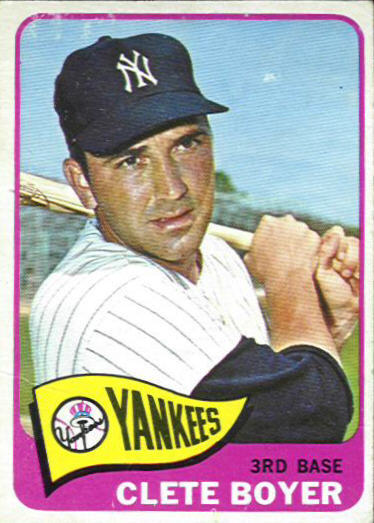

The coaches and Willie identified every single thing in baseball he might face, every little episode, every event. Catching a ball this way or that way. Running from first base to second base, first to third, etc. To my memory they identified some 30-40 specific events, very big and very small. And, during that off-season at this ground-breaking camp, Willie did every one, 100 times each, almost every work day, under their watchful eyes. As a result, he had a rebirth in performance and played several more years successfully. He went back every off-season until other factors, mostly age, interfered. Wow. Another epiphany for me. Tools. Steps. Skill exercises, big and small. Set me to thinking about diverse applications in teaching. Teaching technology, so to speak.
Thank goodness since then, this skill development, this training methodology really caught on, widespread, even down to grassroots, neighborhood league coaching. Officially! (When I coached my kids’ baseball teams I made it a point to take players aside and work on specifics in sessions.) For the last few decades we see this influence in every sport. Records of almost every sort have been broken. The talented continued to improve, The mediocre became better. The lost became at least, found. I also noted such advancements in high school, college and pro football. In the last decades we hear professonal football players talk about the difficult leaps in training from high school, to college to the pros. These methods are all another good form of mimicry too. Mimic the pros’ training methods, not just performance.
Are you way too lanky, tall and skinny to be the baseball catcher? There are reasons most succesful catchers are shaped as they are. We have to remember we are all different. Basic boxing is much the same, but Mike Tyson should not fight like Muhammed Ali, and vice-versa. Dan Inosanto should not run the football like Joe Jones. Don’t over-train in tennis to be a basketball player. Reduce the abstract. Isolate the skill steps and build them. In the Who, What, Were, When, How and Why questions I live for, this is a big “who question.” Who are you? Shape, size, age, strength, etc. Who do you mimic?
Who are your heroes and to what end? Coaches and teachers in these essentially cookie-cutter, sports and martial arts programs must be careful and recognize these differences. Is your “ku-roty” or combatives or self defense teacher a super-star athelete, power-lifter that oh-so does-looks the part? And…you’re not…can you recognize these reaities?
This is why I am obsessed with identifying and teaching the universal, versatile, achievable, core, survival basics foremost. What can most people do? Grasp? Get that stuff done. Work on the probable problems first, then the improbable. Then with good coaching I.Q., recognize natural attributes, steer developments and push people to their private mission success. Its one thing to play a lot of “baseball,” it’s another to excell at third base. At some point, customization must step in.
There are dreams of advancing, then there are tools to become advanced: Two very different things. A major way one advances is with speed, flow and skill drills-exercises. You can’t over do these as many do, else you become a “drill master.” Ask these classic questions:
I am 70 years old now. I have been training and teaching all over the world, meeting with and working out with all kinds of people. Listen to me for a great and important tip. Your “who” changes with time…oh…what…every 5 years or so? Can you still do your once favorite moves? That high kick? That sacrifice fall on the mats, lest of all on cement? Can you still clearly see that front sight on your gun AND-OR your target as well, or are they blurry blobs? Can you still hit that fast ball? Do you need to alter-evolve, dismiss some of your favorite things? Can your 50 year-old self, mimic your 20 year old self? Take stock every 5 years or so of what you do.
There’s a lot to this “mimicry” subject.
______________
Check out Hock’s free Survival Centrix newsletter . Send your email address to Hock@SurvivalCentrix.com
Part One: Definitions
In an era of “words count” and “language precision,” how one defines “Grappling” today is indeed important for system doctrine. Does the noun “grappling” officially and unofficially mean as it once did – “all close-up, hands-on struggling standing and ground?” Or is it now just ground… wrestling? Is all grappling just wrestling now? Is all wrestling just grappling now? Can you punch and be “in” official grappling or not? Does “old school Jujitsu” – full of stand-up moves – still count as grappling? Apparently not…
For many decades, perhaps centuries in some cases, the definitions for “grappling” have remained in place. Grappling was once defined in the books and history as a:
Both standing and grounded. Anything goes, like hand strikes and kicking. Sports, point-scoring and arts were hardly mentioned, and if so in some cases, were not mentioned in the opening generic, dictionary lines but down a bit like in an addendum with samples.
But today! Thanks to the popularity of many modern martial arts, the word grappling has been redefined in many sources only as a “wrestling submission contest on the ground.”
Soooo, grappling is now nothing but a wrestling submission contest on the ground? What does this mean for ground n’ pound (Gn’P)? As a general rule, you can’t punch in wrestling, Judo, or Brazilian Jiu Jitsu, whether it’s in a competition or a training session.” So, that’s it for grappling? Just wrestling?
Sure, scholastic and Olympic wrestling has helped reshape this definition. And we can assume that the latest widespread rise in Brazilian Jujitsu (a BJJ school every three blocks, which is an overall good thing) has also influenced this redefining. In a way, “Brazilian Jujitsu” has hijacked the word “Jujitsu” in popular consciousness. Ask anyone remotely interested in martial arts and under the age of 40 years-old what “Jujitsu” is, not just Brazilian Jujitsu, but just Jujitsu, and they will automatically think of Hispanic wrestling. I don’t since I am way older, and since I did Jujitsu-Jujitsu, and Aiki-Jitsu, well before the marketing miracle of the UFC. (Say “UFC” and I presume people think “MMA.”)
Nowadays, many schools advertise and call themselves just plain old “Jujitsu” when they are actually “full-monty,” Brazilan Jujitsu. The two have become so synonymous. In fact, if you ask Sensei Google any question about Jujitsu on the net, or if even quantifying a Japanese Jujitsu question, Google will usually respond with lines starting, “In Brazilan Jujitsu…” Search on Jujitsu images and I would estimate about 95% of the images are wrestling on mats.
Thats what you might call a martial monopoIy and brilliant advertising added to the fact that pure wrestling is very addictive. And that BJJ domination, along with wrestling and Judo runs deep, and has effected the term and understanding of “grappling” today. But, this redefinition to “ground submission contest,” has shrunk the original meaning. The word has evolved or actually de-evolved, into a fraction of what it once generically was. Bigger picture to smaller picture. One subject in the shrinking is about takedowns. Do you always fall with the person being dropped? Or not?
Sacrifice Falls and Accidental Falls. Wrestling of all kinds start with Stand-Up fighting-grappling, even if Stand-Up isn’t found within most popular definitions anymore. Inside these old and modern submission-wrestling based approaches, they must have ways to get opponents down on the mat to begin their ground, sport submission contest. Some BJJ folks just drop right on their backside now to start fights “at the whistle,” but ordinarily there’s a few stable takedowns and throws. How one takes down is a tribal definer – do you fall down willingly with the opponent or try to stay up? The fall-withs or “sacrifice falls” are easier. The stay-ups to remain standing or knee-high are a tad harder. They’re called by me “Sacrifice Falls” and “Accidental Falls”:
Both “Sacrifice Falls” and “Accidental Falls” can go three ways. For what you do, what fallen, follow-ups would be best for what you do?
Back to the Definitions. I use the older, bigger definition for my Force Necessary: Hand course, the unarmed course. In my doctrine, “grappling” is the “close hand-to-hand struggle standing and on the ground” with no rules, just the laws for crime and war. And “with, without and against mixed weapons,” priority. The study will partially remain in the “MMA-like, kick-boxing-like, stunning set-ups via strikes and kicks, takedowns and throws, and primarily MMA-like, ground n’ pound, (and with choke finishes). (MMA really is the closest sport to reality.) Joint lock-cranks are certainly studied, standing and on the ground for general “martialist’ knowledge, and of course much joint-locking is inside takedowns and throws. All martialists must know how all joints of the body twist and bend, no matter what system they do, this knowledge breaches into ground fighting. They are also used to keep people “still” for awhile, like your drunk uncle…
Still For Awhile? – Submitting Drunk Uncles... In survival combatives, we look at and dissect a few, super basic, simple submissions for those times when our “drunk uncles, other relatives and-or nutty friends” must be contained temporally. Captured, not hurt, because you will see cousin Charley again at next year’s bar mitzvah. But, submissions (other than chokes) for us, are not the over-emphasized-main mission. Not… “king.”

Submissions in Police Work. When you get a bruise on your ass, from the badge in your wallet, in your back pocket, you know you’ve really been real ground-fighting. These experiences, investigating cases have worroied me, helped me “set a bar” a stage, for reality in ground doctrine. What’s works? What’s sports-art. I’ve had to arrest some people. Best records I can amass since 1973 is about 900 people in the field as a patrol officer and detective. Not too many arrests really in all that time. Some resisted, some fought, and a rare few tried to kill me.
Checkers versus Chess. My physical end “checkers move” was to handcuff them. A very large majority of submission-tap-out material were “chess-like, sports-art” and not a priority ending. Handcuffing was. The fight doesn’t end with a tap-out, and you cannot go about your life breaking everyone’s bones to end fights. First off, you should not toss EVERYONE on the ground, all the time. You don’t have to. But standing or ground, if you joint crank-lock someone, and they cry “Ouch! You got me!” when you let them go, they continue fighting or continue to run away. Trust me on this. If down and leg locks? Too far away from handcuffing and not a police priority, In general, I have found old school Jujitsu with a lot of Stand-Up grappling way more valuable.
Chokes were always an intrical part of early police training and “street” use. I have choked out about 10 people or so, maybe 9 or maybe 11? Not exactly sure how many, That’s not many. Standing and downed chokes are a survival priority for all to use (and a prominent place in the Force Necessary: Hand curriculum.)
I scratch my head every time I hear that “all police should be purple belts in BJJ.” Ahhh…no. A world of sacrifice falls? Submissions? Leg locks, Chokes (remember chokes are now taboo)? Wrong world. Maybe an orbiting moon? But not the planet. Just…just no. Reduce the abstract. Police need a customized, unbiased – repeat UNBIASED – course of 100% mixed-weapon, police stuff, dressed in police uniforms. BJJ? Just…just no. Police ground fighting is very different animal and it is a mistake to think pure BJJ or any art should be police-mandatory. Remember the Gracies even started a G.R.A.C.I.E. Law Enforcement course, seperate and much different than BJJ, further proving that pure BJJ is not suited for police. (I hear only mixed reviews and am ignorant about it. I plan on attending someday to investigate. Take note that there are numerous police grappling courses “out there.” Don’t take one given by martial artists. Take one owned, operated by cops or ex-cops who were-are also martial artists.
The military needs it’s own highly customized courses too. Don’t get me started on that fiasco.
Submissions in Civilian world. How does all this blend with civilian self-defense-survival? When civilians wrestle on the ground with unarmed and armed rapists, robbers, muggers, drunks or bullies, I wonder, “What is their perceived end game?” The bad guy says, “Ouch! Okay, I quit!” You then…let go? The once controlled thug will re-continue fighting. Or, will you lay locked on the ground indefinitely until help arrives? If help does or can? Again, the real fight doesn’t end with a tap-out, and you cannot go about your life breaking everyone’s bones as some half-wits might suggest. It’s all very situational and legal-problematic. A very large majority of submission-tap-out material were “chess-like, sports-art” and not a priority ending for normal people, in our real world and circumstances.
So…No More Striking? If grappling means “ground submission contests” and ground submission contest systems deny striking…one-plus-one-equals-two…are strikes and kicks (knees too) no longer allowed in official “grappling?” For me, no. I stick with the older definitions and “ground n’ pound.” Speaking of Gn’P, remember the old Gracie quote?
GnP is a mandatory priority for ground survival. Roger Gracie once said that, “80% of BJJ is usless in MMA.” Rickson Gracie said it was 75% useless. Many people think I am useless and dumb, but in all my years of doing, watching, investigating, experimenting, classes, seminars, working out, arresting people, I agree with these icons’ opinion. I am not alone.
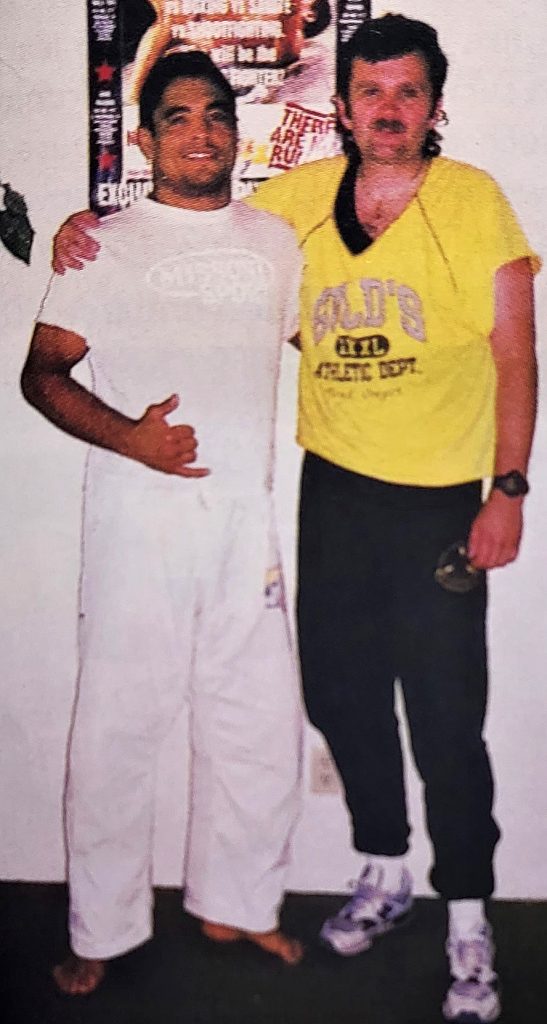
Looking at the UFC, ESPN reports the headline: “How MMA Fights End: Submission Victories Way Down” “Less time is spent on the ground overall,” they report. Gn’P way up. Chokes are catagorized in the submission category numbers, so how many of the vanishing submissions were chokes? Take away the many choke stats and what’s left in the shrinking submission sucess category?
There are of course splinter groups with some strikes, “grappling” with wrestling-only problems and trying to introduce realities. Like Eddie Bravo’s Combat Jujitsu that allows for hand strike slaps. “Strikes can only be done with an open palm. Palm strikes to the body, the face and the side of the head are considered legal. No closed fists allowed. Standing grappling is only permitted for 1 minute maximum. After 1 minute of standing, a horn sounds and the referee enforces the “Get Down” rule. There is then a coin flip and the winner decides whether to be on top in their opponents butterfly guard with double under hooks or on bottom in the same position reversed. If the one standing has clearly been the aggressor then they automatically win the coin flip.”
Okay! That’s kind of complicated, but as I said, there are splinter groups. Even the Gracies had to start “Gracie Combatives.” Why? If it was so perfect in the beginning as advertised, Why? Just…just stick with today’s generic MMA, I think. It’s the closest you’re gonna get. It is interesting that when wrestling systems add so-called “self-defense,” offer self defense versions, they start losing their origin dogma-doctrine, their original “look,” and become… well… combatives. (Ahhh – that’s my planet.)
Speaking of the UFCs of the world, I must quickly mention that I have a process in my evaluation of a hand-to-hand tactics-techniques. I have two questions in that vein…
In summary, fighting system doctrine, not dogma, guides the system. Mission. Martial I.Q. studies the ways and mean to develop doctrine. Definitions really count. They they might change “right under our feet” (yes a pun). People do what they do for a variety of reasons. Know your reasons, the definitions and the doctrine. Be happy. Be educated and content on your planet. Know why you’re there. Or? Hop a spaceship.
Part 2: Smart Ass, Dismissive, Gaslight Remarks
BREAK! OKAY! STOP! You Can Stop Here If You Wish! Now This Essay Has a Two-Fold Mission. One mission with this essay is to examine the meaning of grappling and how it’s changed to suit marketing and the times. And the other subversive mission is using the public definitions for – well – a long, long awaited response to the occasional ignorant criticism of me and what I chose to do, my courses. My mission. I usually ignore these biased critics, but when some reach arrogant, ignorant asshole levels it just becomes harder to ignore.
Though I have worked “hand-in-hand” with Catch (my favorite) and BJJ people, I do still seem to aggravate a small percentage of doofuses. I sometimes hear the smart ass, dismissive remarks that…“Hock knows nothing about grappling.” Another classic retort is the advice that since I am so utterly dumb and blind that I just need to join a BJJ school to finally understand what real “GeeeRAPPLING ” is. (As if I have never had explored all this.) These critics rely on their smaller, definition of the word “grappling,” the “submission ground contest” version, and they have no idea about me, my past and my mission. They read a short something I written or said… and… assume I am dumb. You see, for them, I haven’t joined their tribal church, seen “their light” as they know it. But, I am not quite as dumb as you think.
The occasional half-wit, hyper-sensitive assholes even type this, “You wouldn’t last 5 minutes in the UFC MMA ring.” Dear Idiot-boy, I am 70 fucking years old, I wouldn’t last one minute with 30 year-old, 6-day a week, fight-athletes in the ring. But here’s another secret your peanut brain hasn’t figured out. About 95% or more of martial arts instructors and students in the whole planet wouldn’t last 5 minutes in the UFC – MMA ring, young or old.
I am rather familiar with their matted landscape. In police academies and waaay back when in, in-service training there was much control and contain ground fighting, with strikes, kicks and chokes. Once very brutal, the police doctrine got paranoid by around the 90s and the more rough-stuff disappeared. As I said, chokes are pretty much gone. The old police stuff was Catch, Judo, Jujitsu, even old-school Karate. I enjoyed the regular Police Judo classes the military police offered, which were all of the aforementioned, but much situational police-problem-solving also. (They called it all police JUDO back then because “Judo” was a popular word.) In the 80s I started with Jujitsu, Aiki-Jitsu and JKD which was always “up and down.” In 1986 I started up with a deep dive into the Inosanto Family which was already hooked up with Gracies and Small Circle Jujitsu. I was a Larry Hartsell fan and regular attendee of his chock-full-of-Catch-Wrestling and other “grappling” moves. I got to a Level 5 in the Inosanto Family system which included Nakamura “Shooto” shootfighting-shoot-wrestling. Fantastic stuff. High grade MMA. Also luckily for us, there was a famous clan of BJJ guys in the DFW area that put on seminars and open mats in the 1990s. Great people and great stuff. Meanwhile, I studied Aiki-Jitsu (A.J.) to Black increasing my time at throws and takedowns. (Once an A.J. uke was grounded though, A.J. hits or stomps him, as with Parker Kenpo which I started out with in 1973. Little ground time-stuff there, and all stand-up grappling and throws-takedowns… which I guess, doesn’t count anymore? In the newer, “contest-ground-submision” grappling definition?)
The Resisting Opponent…Thing. The nice advice also comes in. “If you just would wrestle for “a year” against resisting opponents, you would build your “Spidey Sense.” This “resisting opponent” is a sales pitch thrown out to others and to me and my presumed dumb self. (My accumulated experience in this subject is already well beyond “the theoretic year.”) My “resisting opponent” in “combatives” is also trying to punch, elbow, face maul and possibly kick me too. Their resisting opponent will not, does not, won’t punch, maul, elbow, kick or cheat. In the end whose “spidey sense” will be smarter for survival? Whose muscle memory will be “better?”
Muscle Memory- The Lost Strike – Forgetting Ground and Pound. Through all the wrestling-related materials I worked on, I worried about “muscle memory.” That if I just did that too much, I might forget striking, blocking and kicking. I had numerous friends in Judo and later BJJ, who, essentially, literally, forgot to punch, to hand strike. I’ve seen this type of loss many times over the years. Striking is not in the doctrine-dogma. I worried about me missing survival opportunities and would from, well, brainwashing forget striking and opt instead to roll and roll around.
I recall one time when a batch of “new kids on the block” were doing a seminar involving unarmed fights inside cars. These guys are biased BJJ-ers. Car fighting is logistically hard to teach-show because car interior wrestling destroys the insides of cars or they have to “hold back” from reality to save the cars. After a few sessions, I commented that there was not a punch, elbow, or palm strike, head bouncing off window-dashboard or door post in the whole somewhat, cooperative car wrestling match. None were taught either in isolated, outside-the-car possibilities. One of the hyper-sensitive instructors responded, “You know nothing about grappling!”
Oh? Huh? In 26 years in police work I’ve had to climb into and remove and fight people inside cars. Palm strikes, hammer fists and elbows were VITAL. That gaslighting angry instructor? He sells insurance and has a commercial BJJ school. So as not to embarrass him, I said little in reply. I so wanted to say though – “And YOU know nothing about fighting inside cars, bubba.” Shoulda. But I didn’t. As I am not that type of public asshole. (And you know otherwise, that guy is great BJJ-er and a very nice guy, but I guess, just hyper-sensitive.) But, there was that classic line again. Make a comment about the limited, inherent inefficiencies of wrestling muscle-memory? Bingo! You get the standard gaslighting remark. It’s like a rehearsed line from a passed around script. That line the best you got?
Simulated strikes on friends in training aren’t felt or recognized at all, and these things become worthless in “pressure testing” and “resistance experience.” You always end up in wrestling matches because ignored simulated strikes don’t count and slowly, innocently, disappear, de-evolve away. The ignorant, shallow person with a low martial I.Q. can’t recognize this training problem-conundrum. In MMA matches, this is not a problem. They strike “when the iron is hot” for real. When the hole is open, and the hole opens a lot. In combatives this concept is not a problem either. If there’s a hole? They hit it. We must recognize and reward these in simulations to ensure proper doctrine. Real reality training can at best, sometimes, involve acting. Say that last line aloud twice.
One flippant daushbag said once that he bet I’ve never had someone really grab me around the neck. Well, Ding-Dong, I have. The guy damn near broke my neck and killed me in South Korea. I broke his finger to survive. I have been put in the hospital and I have put people in the hospital. But ding-dongs don’t know me.
Seemless Fightng, Not Segmented. In my hand, stick, knife and gun courses, I have a motto, “everything you do standing, you should try and do on the ground.” Constant experimenting. We are constantly, consistently doing combatives on the ground. Striking, kicking, trapping-pinning, choking, drawing weapons, shooting, slashing, stabbing, even taking this or that joint lock-crank…on the ground. I am committed to the seamless application of all good moves, from standing through the ground.
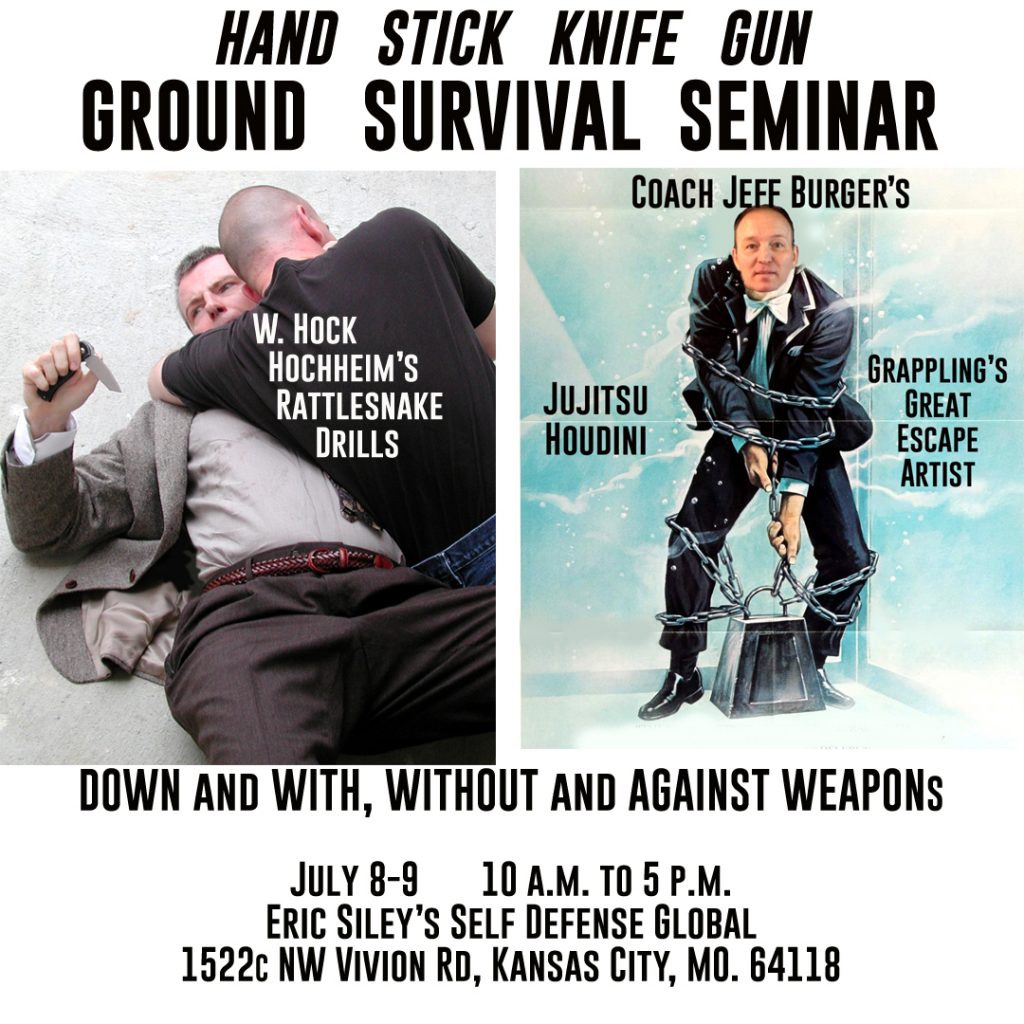
In my hand, stick, knife and gun courses, I have a motto, “everything you do standing, you should try and do on the ground.” Constant experimenting. We are constantly, consistently doing combatives on the ground. Striking, kicking, trapping-pinning, choking, drawing weapons, shooting, slashing, stabbing, even taking this or that joint lock-crank…on the ground. I am committed to the seamless application of all good moves, from standing through the ground. What do you think I’ve been exploring-doing for the last 51 years? I do know something. I am not as dumb as you think.
But gaslighters? It’s just I don’t look like you, dress like you, think like you, act like you, seek what you seek, we don’t start like you, or finish like you and our middle is different. I… have… a… different… mission. Just because I don’t worship at your church, doesn’t mean I’m a heathen.
Summary. So in a world where “words count,” precision language is important. If your only definition of a grappling expert is just being a dedicated master of tap-out, submission ground contests? Then maybe you are right about me. I do not know the tons and minutiate about your fractional, smaller definition of “ground sports contest grappling.” Maybe in that regard, you should get all uppity-superior on me. Go ahead, but try not to be too much of an asshole? I might just agree with you. I am always looking for tidpits I can alter, process, use and teach. And counters. Counters to everything. When I am there to learn, I am not there to replicate systems, I am there only to learn how to beat systems.
Oh, and to the asshole, hyper-sensitive commenters with ignorant, snap, gaslight judgements, with no internal filters bordering Tourette Syndrome…who really don’t know shit about me. Fuck you. Fuck you and the horse you road in on – remember in the very big picture of hand, stick, knife, gun crime and war? Your horse is really defined as a very small, one-trick pony.
______________________________________
Usually, one breaks their hand when punching the “Bicycle Helmet,” top area of the head. The opponent ducks or ducks-and-turns his head and you, whether thrusting or hooking, when your bare fist hits the “helmet” area, your hand gets jacked up. But here is an odd story of my busted-up finger not near the helmet. (Here, Tom McGrath of the UK is helping me demo this underarm delivery uppercut in Belgium, the centerpiece move of the essay.)
One night I was arresting someone, and he decided to fight me. And in the tussle he threw a pretty lame thrusting punch or push, or perhaps a bad blend of both at me. Anyway, I wound up in this underarm uppercut position – which is a popular training position – and I punched him in the chin. Pretty decent shot as he was bewildered enough for me to yank that arm around his back and handcuff him.
BUT…I remember the sharp pain in my middle finger. While booking him into the jail, it swelled up and of course I knew the lump wasn’t cancer. I knew it was from the guy’s damn, pointy jaw and the solid position his head was in. Well, the swelling went down in a day or two. Pain went away. Another come-and-go.
Through the years though, cysts appeared and disappeared in that space in the space between the middle finger and pointy finger and up the middle finger. Small-sized and medium-sized. I thought it weird, but they eventually came and went away too. Then one month, one lump got so big that I really couldn’t do much with those fingers. When I couldn’t put stamps on envelopes, I decided to see a hand doctor.
Diagnosis? That punch from many years back put a hairline fracture in my finger bone from the knuckle to first joint. The fracture edges were rough with growing bone spurs and the spurs caused cysts. Cure? Hand Operation! Remove the growing octopus of a cyst and shave the bone. Nothing to fix with the hairline fracture which I gather was naturally, “glued” somewhat together from time. (Yes, the cyst in a jar he showed me looked like a min-octopus.)
We hear a lot about broken hands-fingers from fights, and I have had a few classic hand swellings from punching people on the job, but when punching I never had common breaking problems many other cops (or people) had, which was kind “blind-concept punching,” I guess you could call it. From training I just aimed lower and held a tighter fist (tips from old ku-roty). I just had this lasting one problem, one I think rather uncommon for me, from an uppercut, down below the “helmet.”
I don’t want to start a long scientific punch vs. palm strike dissertation here, nor create the martial hand damage medical list. I am not against bare-knuckle punching. Other than the “helmet area,” heads usually do “give” when struck, jaws give, necks allows for movement, but there’s much less give in that bicycle helmet area. People see…INCOMING! and reflexively drop their face. Where the nose once was is now the “helmet head!
Fists must be tight, not loose as bad habits create inside boxing gloves. (Bad habit, ask Tyson.) When we fight for real, we won’t be wearing gloves and a mouthpiece and bare knuckle fighting is a real-deal, end challenge. Prep for it yes, but I don’t think we should destroy our knuckles and hands hitting hard things that don’t give-way somewhat, as done for decades like with old school karate-kung fu people. (I know old-timers that cannot hold a cup of coffee in their hands today from makiwara boards and the like. There were times when monster knuckles were badges of honor.)
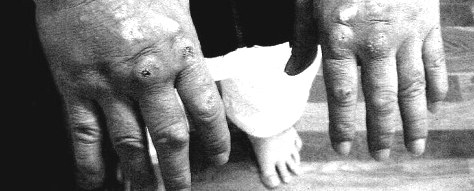
Tone that down! You don’t want to meet the “Situs Brothers – Arthur and Burr” in your 50s and 60s. Rather we have to “strike” a compromise, pun intended.
I also think instructors should take a look at their practitioner’s hands and inspect the size, shape and potential for real-world punching. Some people ae structured to punch tanks, others have little thimbles for fists and should not trust punching anything, despite the endless focus mitt and bag drills they are forced to do. In the end, your job is to build customized, personal success as a doctrine, not replicate cookie-cutter dogma results. One size does not fit all. One system does not fit all. One sized fist training does not fit all.
Anyway, all’s well with that finger now. Hey, remember the bicycle helmet area advice! Aim lower. Tight fist.
________________
Watch free, full training films at Hock’s Combatives TV channel. Click here.
I have been lucky I guess, having done CPR on a few folks though the years and they all lived. EMTs are doing it all the time. with mixed results. But citizens? Adam Gent of Real First Aid in the UK wrote this important consideration.
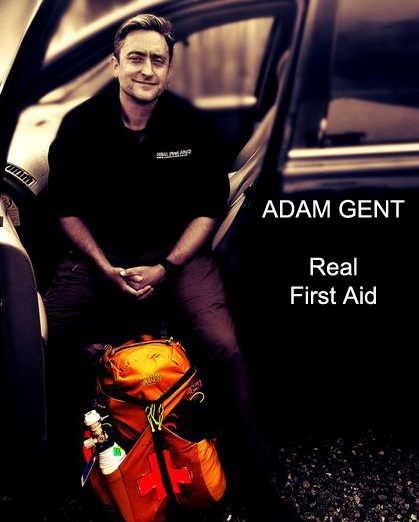
Dark humor.
Ill-founded optimism.
Don’t get me wrong, I am a big fan of dark humor. But if we create an environment where only dark humor is allowed, we do not allow any space for difficult conversations – every opportunity for a meaningful conversation is deftly deflected with an automatic joke and crippling bravado.
What do I mean by ill-founded optimism? Telling people “CPR saves lives” as though it is a given. Because it doesn’t. The absolute vast majority of people who go into cardiac arrest stay there. Forever. But I get it. We want to foster optimism; we want candidates to go out there and do their best. Why wouldn’t you try? But to tell people that CPR can restart a heart or that it can ‘bring someone back from the dead’ is just cruel.
I have lost count of the number of people I have met who have told me about their experience of having to do CPR, and it predictably follows the same format “…so I did CPR…but they died.” With a look of absolute desperation, blame and guilt. All because they were told that CPR saves lives, but in their case it didn’t. How unfair is that?
I know people who have performed CPR on their family or friends who are clearly dead, because the Call Handler told them to. Their last memory of their loved one is brutalizing their body and the taste of their vomit in their mouth. Because they didn’t have the confidence to accept they were dead and nothing could change it, because they were told “Only a doctor can declare someone dead” or that “once you start CPR you can’t stop” or some other nonsense.
Make time for difficult conversations about how woefully unsuccessful CPR is without a defib or within a reasonable time frame. About accepting that dead people tend to stay dead. They were dead when you found them, they were dead while you were doing CPR and they stayed dead afterwards. Nothing changed. It was not your fault. Make time to talk about loss and grief.
Difficult conversations are worth having precisely because they are difficult.” – Adam Gent of https://www.realfirstaid.co.uk/
